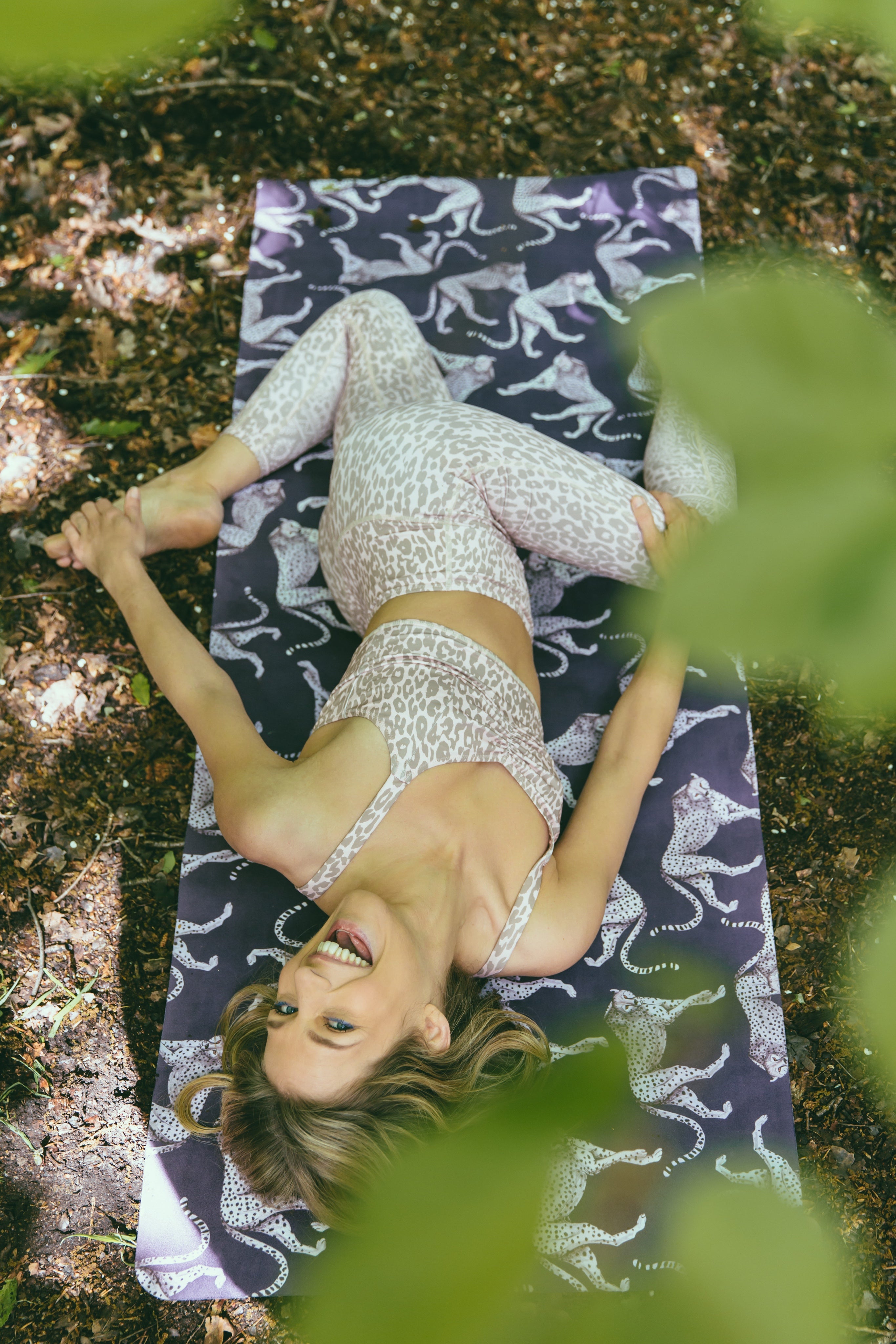What makes a good Yoga mat?

Our founder, Laura, talks about what to look for in a Yoga mat, whether you’re a newbie, or seasoned pro.
It can be daunting figuring out which mat is the best one for you, particularly if you're new and haven’t tried that many different 'types' of mat out yet! Here at Kin we put our Yoga teacher heads together and compiled a list of what we think you should look for in a Yoga mat, and why;
1) - GRIP - This term comes under various guises (non-slip, trippy, sweat absorbing...) and after much market research we have found it tends to be the number 1 thing people look for when investing in a mat.
Many cheap mats are made from slippery rubber or materials that cause our palms and feet to 'slide around' when in even the most basic poses (the down-dog slippy palm is a classic gripe of many a Yogi) particularly when we get a sweat on.
We believe the classic Kin mat has the ultimate grip - the PU surface mimics human skin and so its grippy without having to be rough and uneven (some mats use a rough surface which also works, but we think they're less hygienic, and feel less pleasant underfoot...plus they scratch your toe polish!).

High grip Kin surface ‘skin’
2) - CUSHIONING - Yoga mats come in various thicknesses, from lightweight travel mats (eg. Our SKinny mat which is just 2mm thick and easy to pack/commute with) to luxuriously thick 6mm mats. Traditionally 6mm is the absolutely max thickness a Yoga mat becomes, before it ends up being too squishy to be able to provide enough stability for a dynamic Yoga class. Plus at 6mm, your mat is going to roll up into pretty big and/or heavy roll, and will be tricky to store.
Everybody has a different opinion about how much padding is enough; some have hardcore joints that are totally resistant to hard Yoga studio floors, but for our founder Laura, bony bits that dig in were an issue!
It's not just the thickness, but also the density that provides comfort on this level, which is why we at Kin added a unique air-filled fibrous layer to add a floaty light layer of cushioning, so we ended up with a mat that's roughly 4mm thick, but feels like 6mm.
3) - The last important thing to look out for, and that can really affect your practice, is 'stability'. Ie will your mat slip and slide around dangerously as you move around on it, or will it grip the floor and stay secure? Make sure you don’t purchase a super light, stretchy, 'foamy' mat (again there are a lot of cheap mats like this on the market, most of them are also hella bad for the planet...enter TPE & PVC…). If you think you might like a mat that weighs nothing, it most likely will stretch and slide around; causing an annoyance at the least, and a will most likely end up being pretty dangerous (we've seen people fall over during balance poses, and slip into dangerous stretches like splits because of cheap, bad mats).
The base of the mat needs to be solid, and grip the floor (you'll notice the grooves on the base of our Kin and SKinny mats that are made from natural rubber, and grip the floor like car tyres; they are so secure you could even practice a dynamic fitness class on them and you wont get any sliding.
So just remember you will find many cheap, environmentally hazardous mats on sites like Ebay and Amazon, and in discount stores, that are marketed as 'fitness, pilates or yoga mats', but are really not great for any of those things! They are also likely made from stretchy PVC that doesn’t provide a safe sturdy base for a dynamic practice; it's really a false economy!
”We'd be delighted to answer any questions you guys have re the technology of the Kin mat, just leave a comment below and one of our Yoga teacher brains will get back to you ASAP”!
Laura, Kin founder
…Next week we take a look at how important it really is to own your own Yoga mat…




